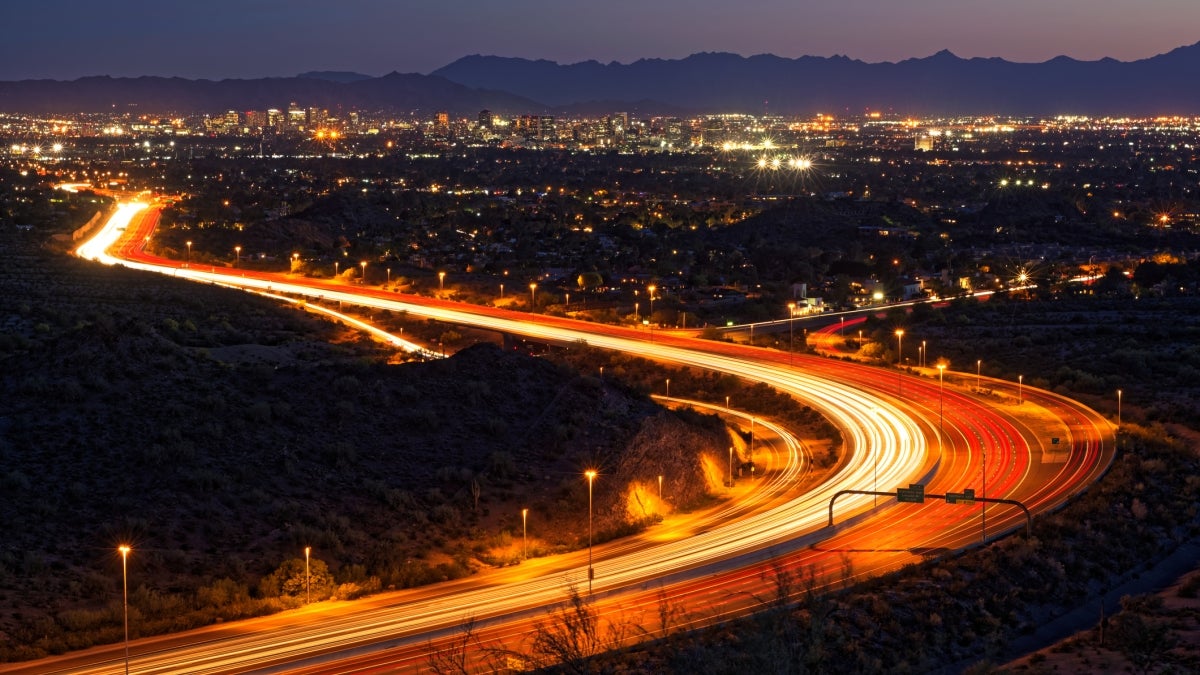How car ownership affects income opportunity

David King, assistant professor in Arizona State University’s School of Geographical Sciences and Urban Planning, examines the connection between car ownership and income opportunities in a new research paper titled “The Poverty of the Carless: Toward Universal Auto Access,” published Feb. 1 in the Journal of Planning Education and Research with co-authors Michael Smart of Rutgers University and Michael Manville of the University of California, Los Angeles.
ASU Now spoke with King about their findings.
Question: How is car ownership tied to an individual or family’s economic opportunities?
Answer: We commonly talk about American cities as being automobile dependent, and a consequence of that is that people without cars are not able to access the economy as well as people with cars. In our paper, we looked at how incomes of carless households in the U.S. have declined relative to the income of households with cars — with the exception of New York City, which has done the least of all U.S. cities to adapt to automobiles. In New York City, you are not punished for not having a car, whereas in just about any other city, you will be economically harmed by not having a car.
Q: What differences do you see between car-oriented cities and pedestrian-oriented cities?
A: The biggest differences are density and proximity. One of the big problems with cars is that it takes a lot of space to accommodate them. As we’ve built our cities around automobiles, our roads have become wider, the lots where buildings are built become dedicated to parking, and buildings are set back. If you are walking on a sidewalk in Tempe or Phoenix, you’ll get the sense that even though you’re on the sidewalk, you still have to walk through parking lots or cross streets with speeding traffic to get where you need to be. All of these car-oriented design decisions have added up parcel by parcel to make our cities more accommodating to cars and hostile to people who don’t own cars.
Q: How could newer urban-development projects affect this connection?
A: There’s no question that U.S. cities have been seeing an increase in growth in their downtown areas. And a lot of developers and planners tally this up to a preference for downtown living or denser urban living. There’s something to that, but what a lot of cities did is they started relaxing their zoning in downtown areas to allow residential construction. As a result, developers started building and prices and rent went up. When rents inevitably decline, developers aren’t going to build as much. Over time, rent will go down and become more affordable, but that will take a long time to happen. Newer downtown living is aimed at a fairly affluent market. If you have enough money to live without a car, you can rent a car or take Uber or Lyft. But there is a difference between being carless by choice and carless by circumstance.
In our paper we argue that better land use is important, and it is imperative that we start building cities in ways that are not mainly car-oriented. That is a long-term solution. And that’s the crux of our argument: There are people we can identify who are harmed by our auto-oriented economy, and we need to help those people now, not in 20 or 30 years.
Q: What are some ways the U.S. could improve car ownership in the short and long term?
A: The best short-term solution is to come up with a program that gets people access to reliable automobiles. There are some nonprofit organizations that have done this around the U.S., and they have proven to be very effective at helping people gain employment, gain better employment and maintain employment. It’s very expensive to be poor. And not having reliable transportation could mean that you lose your job.
Q: What is the role of public transportation in this problem?
A: Public transportation works well where we have density. You need both population and employment density. Downtown Phoenix or Tempe work well for public transit because of the employment and population density. But, if you think about the larger Phoenix region, most employment is spread out. That is fairly typical of Sunbelt cities, and it makes providing regional transit options difficult. In contrast, in Manhattan the central business districts have local and commuter rail that can get thousands of people in and out of the city at a time. We don’t have that kind of infrastructure anywhere in the Valley.
Another related issue we’re seeing is the suburbanization of poverty. Jobs are suburbanizing, and poverty is suburbanizing. As suburbs are aging, they are becoming cheaper places to live, whether you’re buying a house or renting. So, people are moving to where they can afford to live, even though that will add additional costs. If you can’t afford a car, then you might be stuck on hours-long commutes waiting for multiple buses and so forth. That’s assuming public transportation is being maintained in any given suburb.